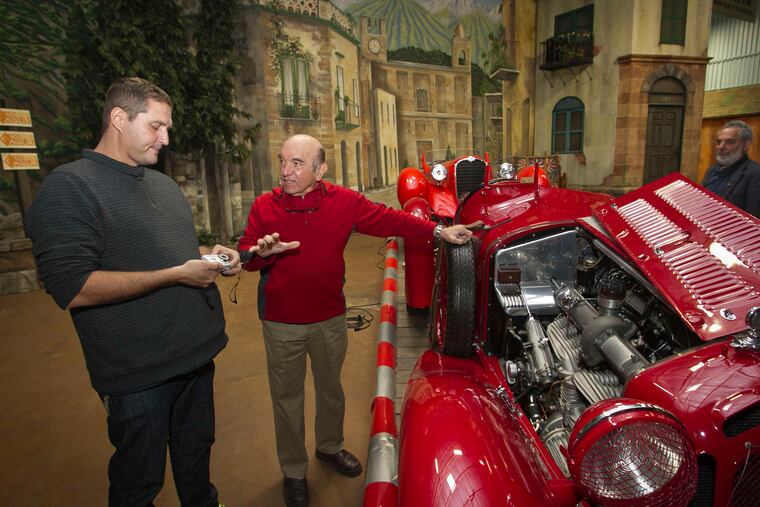Leaving a legacy of cars
Fred Simeone has spent half a century collecting race cars, and Philadelphia is the lucky beneficiary. His massive, impressive collection - more than 60 world-class vintage sports racers - is open to the public in the huge Simeone Foundation Automotive Museum, at 6825 Norwitch Dr., near Philadelphia International Airport.

Fred Simeone has spent half a century collecting race cars, and Philadelphia is the lucky beneficiary. His massive, impressive collection - more than 60 world-class vintage sports racers - is open to the public in the huge Simeone Foundation Automotive Museum, at 6825 Norwitch Dr., near Philadelphia International Airport.
Simeone, 80, a retired neurosurgeon, first fell in love with cars by tagging along to junkyards with his father, Anthony, who died in 1972. We talked to him about his museum's sweet wheels.
Edited excerpts from the conversation:
Question: How did your dad influence you to create this museum?
Answer: My father was my entire stimulus to be a doctor and to be a car guy. We used to do house calls together, and we would go to junkyards.
My dad was 100 percent, and the collection in many ways honors my dad. Four of them were his.
None of these cars I can afford now. Zero. The value has gone crazy. But if you bought them in the '70s, which I did, then they were affordable. And I owe the fact that I knew what to get in the '70s from my dad.
Q: How did you come to open the museum?
A: The collection became, as time went on and we kept accumulating cars one at a time, it started to become an attraction. People from around the world would say, "Boy, he has all these cars."
They were in a big garage in Center City, and I would have visitors come over. It was always required for me to be there and talk to them and demonstrate them. I figured if I put them in a museum, it would be open for people to see them.
Q: How much legwork did it take to open the museum?
A: I did all the legwork myself, and with a bunch of guys from Craigslist. I did not have professional designers, I didn't have the budget to have professional designers, so everything you see here, we built ourselves. We got a lot of it from eBay, and the rest from Home Depot.
The thing is, sports-car road racing is a gritty, earthy thing. It's not fancy, it's not carpeted, all that. That's why the ground was stained to look like dirt.
Q: You've had Jay Leno and other celebrities come through here. What's that been like?
A: There's a lot of car guys in the entertainment world. I don't want to drop names, but, yeah, Jay Leno's been here. There's a lot of car nuts in different businesses.
Q: How do you determine which cars get into the museum?
A: Here's the criteria: They have to be important historically. They have to be road-racing cars, not Indy cars or Formula cars. They have to have all original parts, and they have to be something that represents a high-water mark in the design of that car and that time.
We line the cars up chronologically so that we can show young people that when you compete, things get better. These cars started out primitive, and by the end of the exhibit, you see them very, very advanced.
And the reason they evolved is because they had to compete. They had to be better and faster every year. The theme of the museum for young people is healthy competition is a good thing.